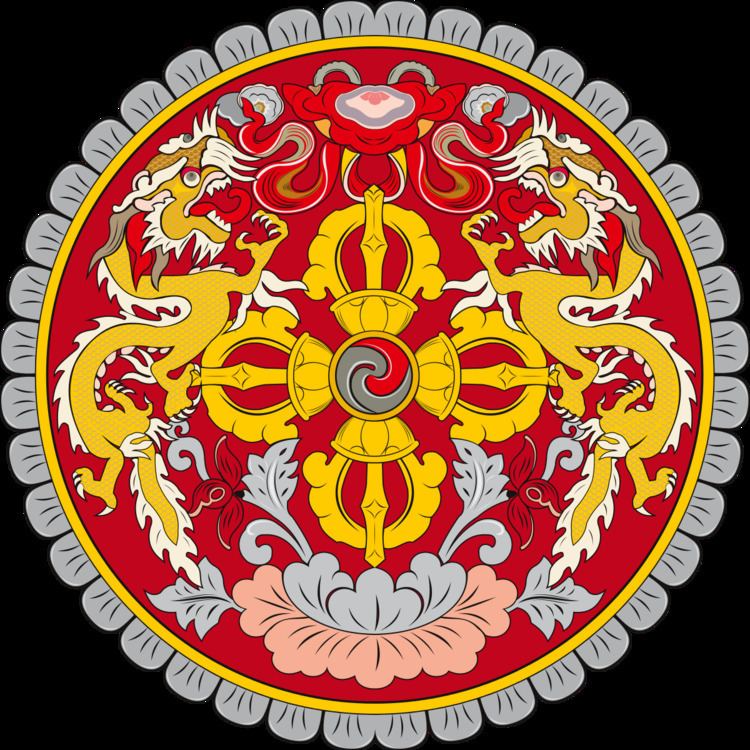 | ||
The Council of Ministers (Dzongkha: ལྷན་རྒྱས་གཞུང་ཚོགས་; Wylie: lhan-rgyas gzhung-tshogs) is the highest executive body in Bhutan. It was created in 1999 by Jigme Singye Wangchuck, the fourth King of Bhutan.
Contents
History of the Lhengye Zhungtshog
Until 1999, Bhutan's Cabinet consisted of a council of Ministers chaired by King Jigme Singye Wangchuck. In 1999, as a major step toward democratization, the King dissolved the existing cabinet and withdrew from his role in the decision-making in the cabinet. Six new ministers were nominated, placed before the National Assembly, and voted in as new ministers. The term Council of Cabinet Ministers, or "CCM," was thus born. From this group of six ministers, a chairman was selected. The selection was based on the number of "yes" votes received during the National Assembly vote. The role of Chairman rotated among members, each minister enjoying the honour for a period of one year.
On July 26, 1999, the National Assembly enacted the Lhengye Zhungtsho Act on advice of the King. This represents the first codification of the modern Lhengye Zhungtshog. Under the act, executive power is fully devolved to the new Lhengye Zhungtshog. Initially, the body lacked a Prime Minister, but was headed by a Chair; later, this position was eliminated in favor of the office of Prime Minister. The Lhengye Zhungtshog was also composed differently from in later years: it consisted of elected Ministers, members of the Royal Advisory Council and the Kalyon. Elected Ministers must have been natural born citizens of Bhutan, must not have been married to a foreign national, and must have already held senior government posts at the rank of Secretary to the Royal Government or above. Candidates were nominated by the King and elected indirectly through the National Assembly. Under the first incarnation of the Lhengye Zhungtshog, as under the "CCM," Ministers continued to enjoy five-year terms while the Chair rotated among them on a yearly basis.
Modern Lhengye Zhungtshog
Under Article 20 of the Constitution of Bhutan, executive power is vested in the Lhengye Zhungtshog, consisting of the Ministers headed by the Prime Minister. The number of Ministers is determined by the number of Ministries required to provide efficient and good governance. Creation of an additional ministry or reduction of any ministry must be approved by Parliament. The Lhengye Zhungtshog must aid and advise the King in the exercise of His functions including international affairs, provided that the King may require the Lhengye Zhungtshog to reconsider such advice. The Prime Minister must keep the King informed from time to time about the affairs of the State, including international affairs, and must submit such information and files as called for by the King.
The Lhengye Zhungtshog must assess the state of affairs arising from developments in the State and society and from events at home and abroad; define the goals of State action and determine the resources required to achieve them; plan and co-ordinate government policies and ensure their implementation; and represent the Kingdom at home and abroad. The Lhengye Zhungtshog are collectively responsible to the King and to Parliament. The Executive cannot issue any executive order, circular, rule or notification inconsistent with, modifying, varying or superseding the laws of Bhutan.
Presently, the council has 10 members who are termed as Lyonpos and wear a ceremonial orange scarf. The Prime Minister, who is the head of the government, is directly elected by the people through two rounds of national elections every five years. Democratic elections were first held in 2008. The latest elections were held in July 2013. The present prime minister of Bhutan is Lyonpo Tshering Tobgay who will be serving for a term of five years.
